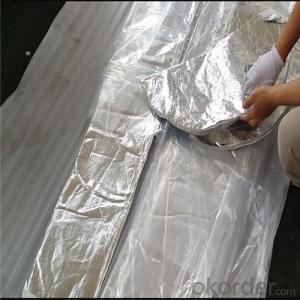Roofing insulation foam is a versatile and efficient solution for homeowners looking to improve the energy efficiency and comfort of their homes. In this comprehensive guide, we’ll explore the benefits, types, installation process, and maintenance of roofing insulation foam. We’ll also share some tips and tricks to help you get the most out of your investment.
Why Roofing Insulation Foam Matters
Roofing insulation foam is a type of spray foam insulation that is specifically designed for use on roofs. It is made from a combination of polyurethane and isocyanate, which react when mixed to create a dense, closed-cell foam. This foam expands to fill any gaps or cracks in the roof, providing a seamless layer of insulation that can help reduce energy costs and improve indoor comfort.
One of the main benefits of roofing insulation foam is its ability to create an air barrier. By sealing off any gaps or cracks in the roof, it can help prevent drafts and heat loss, making your home more energy efficient. Additionally, the foam can also help to reduce noise transmission, providing a quieter and more peaceful living environment.
Types of Roofing Insulation Foam
There are two main types of roofing insulation foam: open-cell and closed-cell. Open-cell foam is made up of small, interconnected cells that provide a more flexible and lightweight insulation material. Closed-cell foam, on the other hand, is made up of small,独立的 cells that are not interconnected. This type of foam is denser and more rigid, providing better insulation and moisture resistance.
When choosing between open-cell and closed-cell foam, it’s important to consider the specific needs of your home and the climate in which you live. Open-cell foam is generally less expensive and can be a good option for milder climates, while closed-cell foam is more suitable for areas with extreme temperatures or high moisture levels.
Installation Process
The installation process for roofing insulation foam typically involves the following steps:
1. Assessment: A professional will assess the condition of your roof and determine the best approach for the installation.
2. Preparation: The roof will be cleaned and prepped to ensure a smooth surface for the foam application.
3. Application: The foam will be sprayed onto the roof, where it will expand and fill any gaps or cracks.
4. Curing: The foam will need to cure for a certain period of time before it can be used or walked on.
5. Finishing: Once the foam has cured, a protective coating or additional layers may be applied to enhance its performance and durability.
Maintenance and Care
Proper maintenance and care are essential to ensure the longevity and performance of your roofing insulation foam. Some tips for maintaining your foam include:
– Regularly inspecting the roof for any signs of damage or wear.
– Cleaning the roof surface to remove debris and prevent clogging of the foam.
– Monitoring the temperature and humidity levels in your home to ensure optimal performance.
– Avoiding exposure to extreme temperatures or direct sunlight for extended periods.
Tips and Tricks
To get the most out of your roofing insulation foam, consider the following tips and tricks:
– Combine the foam with other energy-saving measures, such as solar panels or energy-efficient windows, for maximum efficiency.
– Consult with a professional to determine the best type of foam and installation method for your specific needs.
– Opt for high-quality materials and equipment to ensure a long-lasting and effective insulation solution.
– Regularly maintain and inspect your foam to catch any issues early and extend its lifespan.
Conclusion
Roofing insulation foam is a smart investment for homeowners looking to enhance the energy efficiency and comfort of their homes. By understanding the benefits, types, installation process, and maintenance of this versatile insulation material, you can make an informed decision and enjoy a more comfortable and eco-friendly living environment. So, go ahead and give your home the insulation upgrade it deserves!

